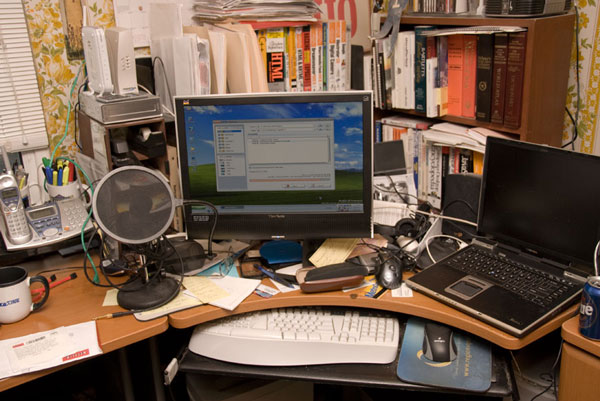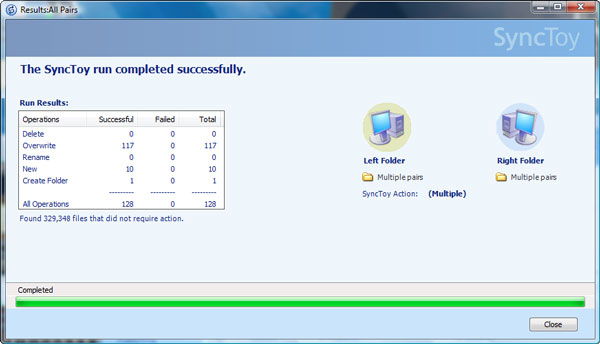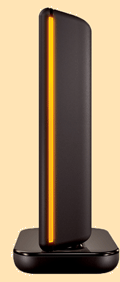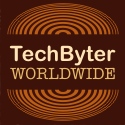To go forward, remember to back up;
and choose your hardware vendor with care
This could have been a bad week. A very bad week. A horrible week. On Saturday, September 15, my computer crashed. After about an hour's worth of tinkering to see if the problem was something I could fix, I decided it wasn't. I then got out the notebook computer, plugged in a new backup drive, and continued working. I tend to preach (to the choir, perhaps) about the importance of backup but backup has literally saved entire projects for me more than once. I've also said several times that it's a good idea to buy a computer from a local assembler. This story justifies both of those positions.
On Saturday morning, the computer was funny in a most unfunny manner. Disk activity went through the roof and the system became nearly unresponsive. After a few minutes of disk thrashing, the computer black-screen rebooted. It had done that once before, a week or more ago.
I restarted the machine and began running diagnostics to determine what the problem might be. Before I got very far, the system crashed again -- black screen. But this time rebooting produced a blue screen.
- Normal booting produced a blue screen.
- Last-known-good booting produced a blue screen.
- Safe mode produced a blue screen.
- Booting from the Vista DVD produced a blue screen.
I disconnected all peripherals and tried again. Same results.
So I took the computer to the east side of town to the company I bought it from. "Looks like the hard disk is failing," the tech said. "Do you need it today?" I explained that I could work from the notebook computer at home. Last week's TechByter Worldwide podcast was recorded using the backup system:

Monday, Monday
It turned out that the problem wasn't the disk drive. Or maybe not just the disk drive. And Vista was giving them fits. It seems that Vista doesn't like to run if it realizes that it's on a replacement drive. After several attempts, they found that a special utility from Seagate, based on the Acronis drive copy technology, was able to clone the disk.
But the blue screens continued. After several thorough memory tests, it was clear that the problem was a failing memory module, so both memory modules were replaced. Again. This happened previously, a little more than a year ago. By Tuesday evening, the computer was ready, so I picked it up Wednesday afternoon.
I use an online backup service, but I also use USB hard drives to back up data. On Friday, I had modified my backup procedure: Instead of using a backup application that compresses files and stores all files in one large file, I switched to using Microsoft's Sync Toy that mirrors directories I specify to an external hard drive. Files stored on that drive are in their native format and I can use them on the backup drive without restoring data.
So I plugged in the monitor, mouse, and keyboard to my notebook computer. I plugged in the new USB drive. Within minutes, I was back in business. I could retrieve the few files that I modified yesterday without updating them on the USB drive from the online service, but I haven't needed to do that. I started creating this report on the backup drive.
You already know how important backup is, so this is a message about why I deal with a local hardware provider:
- "Do you need it today?" They would have been willing to rush the job to be sure I got the computer back today if I needed it. Try that with Dell or HP.
- "The first thing we'll do is clone the disk." Buy a computer from one of the large manufacturers and, if the hard drive fails, they'll send you a new one. It's up to you to recover data from the failed drive.
The computer that came home with me on Wednesday had all the applications that were on it when it left and all the data. It also had two new memory modules and a slightly larger C drive (250GB instead of 200). My cost: $0. Three-year warranties are good. As usual, the hero of the story is TCR Computers.
This is one powerful toy
Another hero of the story is Microsoft's Sync Toy. After installing the application, you tell it which directories you want it to back up and where you want it to put the files. You can also specify whether files move one way or both ways and whether actions that rename or delete files are mirrored on the copy. Because I had just started using this application, I was literally able to plug the backup drive into my notebook computer and go back to work less than 10 minutes after I decided it was pointless to continue trying to resuscitate the desktop machine. And, when the desktop computer came back, Sync Toy made the job of moving new and changed files from the backup drive into their proper locations on the desktop.

Here I had already run Sync Toy once to collect several hundred new files from my website projects directory and all that was left were files from a few other projects: 128 files of the 329,348 files that I've chosen to back up.
I was discussing this series of events and a question came up from a science writer in eastern Washington (that's the eastern part of Washington state, which is in the west and is not to be confused with the eastern Washington [District of Columbia]):
I've got an external hard drive I use for back-up. It's a Seagate, and came with BounceBack [that needed a free upgrade to work with Vista]. By the time I got it, I'd found that Vista has a built-in back-up program, which I turned on. So, now I'm using the Vista "Back up and restore center" and getting regular reminders from BounceBack that I'm overdue. [S]hould the Vista machine fail, could I access Vista back-up files from a laptop running XP? And how about that MS Sync toy?
I looked at the Vista backup application and discarded it. It's not fine-grained enough: Everything or nothing. There are files, directories, and even entire drives that I don't need to back up or want to back up.
The main problem with any backup application is that you need the same application to restore files. Granted, these applications compress files so that you can get more files in the same amount of space, but I don't consider that important any more. When backups went to floppy disks, tape, CDs, and even DVDs, conserving space was important. Now that my backup device is a 500GB hard drive, I'm much more interested in ease of use than I am in conservation of space.
This weekend, for example, I said that I plugged the external hard drive in to the notebook and started using the files directly from the backup drive. Yes, it really was just that easy because the files had been stored individually.
That's what the Sync Toy permits: I tell it two directory pairs the "left" (or "from") and the "right" (or "to") directory. Then I tell it how I want files handled: copy left to right and mirror renamed files and deletions, copy left to right and include renamed files but keep the file with the original name on the right and don't delete anything, fully synchronize so that any change on either side will be mirrored, and a few others. I can specify file types (*.tmp, *.bak) to omit from the copy process.
I could use the Windows scheduler to schedule the backup, but I prefer to run it manually because I can't count on the disk being present at any specific time. Another advantage is that I can make sure the files that have changed are closed so that they will be included. The Sync Toy is incapable of copying open files. This is true of all but the most expensive backup applications, too. For Outlook users, this means that your gigantic Outlook file (the one with all your mail, contact names, calendars, and tasks) won't be backed up if Outlook is running.
The backup included with Windows has a system restore option, which makes a snapshot of the entire drive so that everything can be restored in a single application. It's not a bad idea to run something like that from time to time.
So the answer to the most critical (as I see it) question (Specifically, should the Vista machine fail, could I access Vista back-up files from a laptop running XP?) is no because the individual files will have been compressed and included in a single large backup file.
Insuring your data for 29¢ per gigabyte
Earlier in today's report I talked about on-line backup (I use Carbonite, which I reviewed last year) but I also mentioned that I keep a local hard-disk backup using Sync Toy from Microsoft. I had just added a new 500GB external USB hard drive that I bought for $145, including shipping. That comes out to a little more than a quarter per gigabyte. Seagate's Free Agent drives reveal a lot about how we deal with storage these days and the instructions that came with the drive reveal how far manufacturers have come in making these devices something the average computer user can actually use.
Buying a hard drive used to be serious business that was perceived as being difficult. In days BPC (before personal computers) it was. The things were fragile and you needed to know exactly how to prepare them for use. By the time PCs came along, you might have to attach mounting rails to the side before installing the drive in the computer case. After that, you'd have to format the drive (maybe a low-level format, followed by an operating system format). It wasn't difficult.
 The Seagate Free Agent drive doesn't even come with a manual is on one sheet of paper. The instructions are on one side, the warranty information on the back. The instructions are on 6 panels and consist of approximately 60 words, starting with "This won't take long" and ending with "Please enjoy." In between the steps include taking the drive and cords out of the package, plugging in the power cord, plugging in the USB cable, and that's about it. On a Windows machine (Vista, XP, W2K), the drive will be detected and it's already been formatted as an NTFS drive. The drive is certified to work with the Mac's OS X (10.3.9 or above), too, but Mac users will need to reformat the drive using the operating system's disk utility. The Seagate Free Agent drive doesn't even come with a manual is on one sheet of paper. The instructions are on one side, the warranty information on the back. The instructions are on 6 panels and consist of approximately 60 words, starting with "This won't take long" and ending with "Please enjoy." In between the steps include taking the drive and cords out of the package, plugging in the power cord, plugging in the USB cable, and that's about it. On a Windows machine (Vista, XP, W2K), the drive will be detected and it's already been formatted as an NTFS drive. The drive is certified to work with the Mac's OS X (10.3.9 or above), too, but Mac users will need to reformat the drive using the operating system's disk utility.
From the front, the Free Agent drive nearly disappears, except for that light bar that makes me think a snow plow is in the room with me. (Really it's not as bright as is shown in the image at the right, so there's no mistaking it for a snow plow.)
There's also the box that the drive comes in. Disk drives used to be packed in nondescript boxes. This one is printed in color with snippets of text that suggest why people need more storage space these days such as "i scanned everything" (yes, they used the post-literate lower-case i), "how did you do that" (no question mark), "this song rocks", "i took these with my new camera", "these files are my life", and on and on—on 4 of the box's 6 panels.
On the bottom of the box, you'll learn that the disk is a product of CN and manufactured in CN. (CN, of course, means China.) The front of the box doesn't say how large the disk drive is. Instead, there's an orange sticker that says "USB 2.0 500 Glorious Gigabytes". Other models include the eSATA interface in addition to USB, so putting interface and size information on a sticker gives the boxes a longer shelf life.
The quick-start leaflet has a stopwatch symbol at the bottom of each page and a time. You'll have opened the box and removed the components in 39 seconds, they think; by 59 seconds, you'll have the power cord plugged in; around 1 minute 11 seconds, you'll plug the USB cable into the computer; and by 1:36, the drive will be ready to go. It took me a little longer because I stopped to read the pamphlet, to marvel at the simplicity, and to look over the warranty information on the back. The warranty is straightforward and is written in plain English. The drive is warranted for 5 years against "defects in material and workmanship".

This is the quick-start brochure. Click the image for a near-full-size view (3000 pixels wide).
Oddities and anomalies
- The drive has logic built in so that it turns on only when it's plugged in (natch!) and attached to a live USB port. Disconnect it from the USB port or turn the computer off and the disk drive turns off. For this reason, there is no power switch on the drive. That annoys some buyers. If you need a power switch, either buy a drive from another manufacturer who still includes one or plug the drive into a power strip with a power switch.
- The case cannot be opened. Most hard drive cases have a few screws so that a technician can open the case to gain access to a failed part. To open the Free Agent case, you'll have to break the case and that would void the warranty. This may be taking no user serviceable parts inside a bit too far.
- The USB cable that comes with the drive has a non-standard plug. Actually, the plug is standard, but not for disk drives. The disk-side connector is the kind you'll find on a digital camera, not what disk drives normally have.
- The drive "breathes". You've seen the cute special effect Apple uses when a notebook is asleep. A light oscillates between bright and dim so that the computer seems to be breathing. Seagate applied the same idea to an orange-yellow stripe on the front edge of the drive. This constant activity makes some people a bit crazy. If you're one of them, the problem can be solved quickly and easily with a strip of black electrical tape.
These aren't the topics I'd planned to talk about this week, but they seemed both timely and important. If you have music, digital pictures, video, financial records, and other documents on your computer's hard drive that argen't backed up, what are you waiting for?
Nerdly News
Times Select is dead
"Effective September 19, 2007, Times Select has ended. Content previously published for Times Select is available free to all NYTimes.com visitors." That's the explanation visitors to the New York Times website received this week. Large commercial sites such as that operated by the New York Times can make more money from ads placed on a free site than they can make from charging visitors to read the site.
It was 2 years ago this week that the newspaper began its subscription program priced at $50 per year or $8 per month for online access to its most popular columnists and to the archives. Print subscribers, along with some students and educators, had been given free access to both Times Select and the archives.
After 2 years, Times Select had 227,000 online-only paying customers. That may seem like a lot, but 471,200 received it for free as a benefit of their home delivery subscriptions. Another 89,200 received it for free on college campuses, for a total base of 787,400. And that may seem like a lot, but it leaves population of the rest of the world not reading the New York Times online and not seeing the New York Times online's ads.
An open office from one of the pioneers in closed systems
IBM. Open Office. Hmmm. IBM worked with Microsoft of the OS/2 project, got burned, and has been unhappy with Microsoft ever since. Now IBM plans to take on Microsoft Office with a retread of Open Office. The company says its programs promote an open-source document format.
But they're not calling it Open Office. It's been re-monikered "IBM Lotus Symphony" even though it has nothing to do with Lotus or Symphony. If you want to take a look, you can download the applications from the IBM website.
Lotus-branded applications already compete, but not very successfully, with Microsoft products for e-mail, messaging, and workgroup collaboration. IBM charges for Lotus applications, though, and not too many people seem to be willing to pay for them. Because "Lotus Symphony" is free, it might attract a larger audience.
IBM’s programmers have been working with open source software for a while and last week officially joined the open-source group and assigned 35 full-time programmers to the project.
|




 The Seagate Free Agent drive doesn't even come with a manual is on one sheet of paper. The instructions are on one side, the warranty information on the back. The instructions are on 6 panels and consist of approximately 60 words, starting with "This won't take long" and ending with "Please enjoy." In between the steps include taking the drive and cords out of the package, plugging in the power cord, plugging in the USB cable, and that's about it. On a Windows machine (Vista, XP, W2K), the drive will be detected and it's already been formatted as an NTFS drive. The drive is certified to work with the Mac's OS X (10.3.9 or above), too, but Mac users will need to reformat the drive using the operating system's disk utility.
The Seagate Free Agent drive doesn't even come with a manual is on one sheet of paper. The instructions are on one side, the warranty information on the back. The instructions are on 6 panels and consist of approximately 60 words, starting with "This won't take long" and ending with "Please enjoy." In between the steps include taking the drive and cords out of the package, plugging in the power cord, plugging in the USB cable, and that's about it. On a Windows machine (Vista, XP, W2K), the drive will be detected and it's already been formatted as an NTFS drive. The drive is certified to work with the Mac's OS X (10.3.9 or above), too, but Mac users will need to reformat the drive using the operating system's disk utility.

